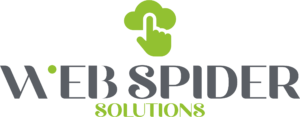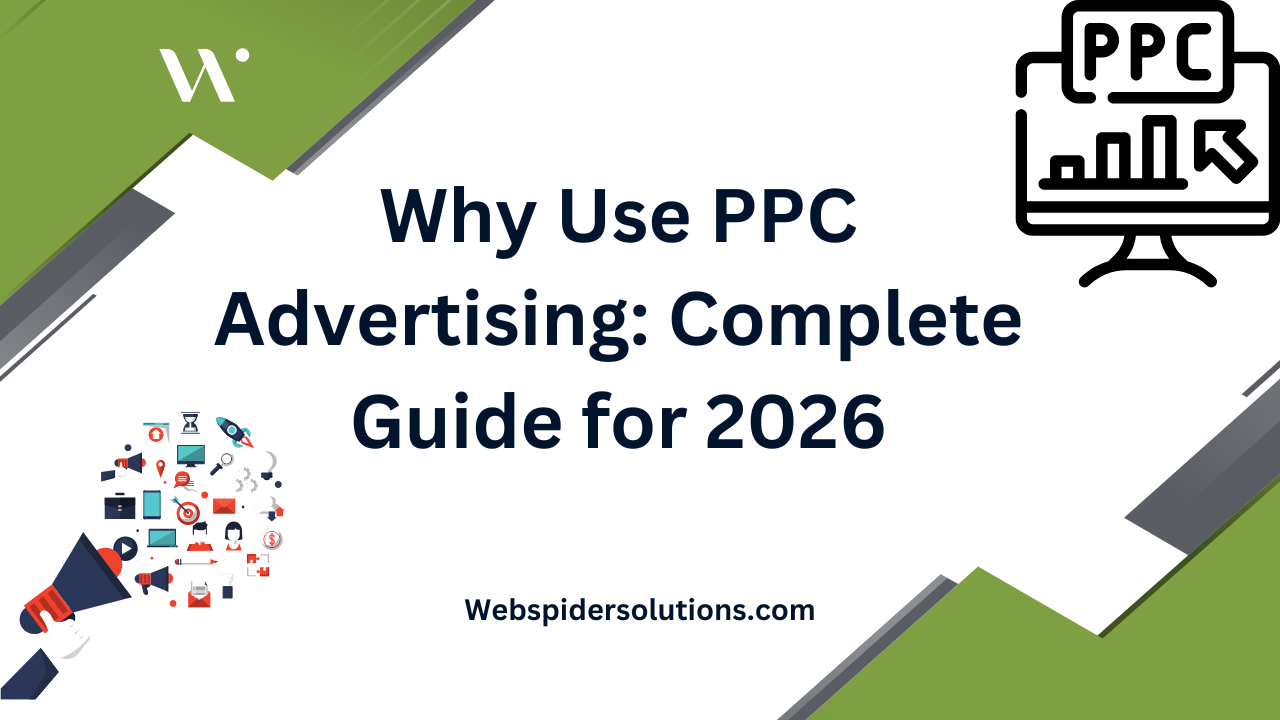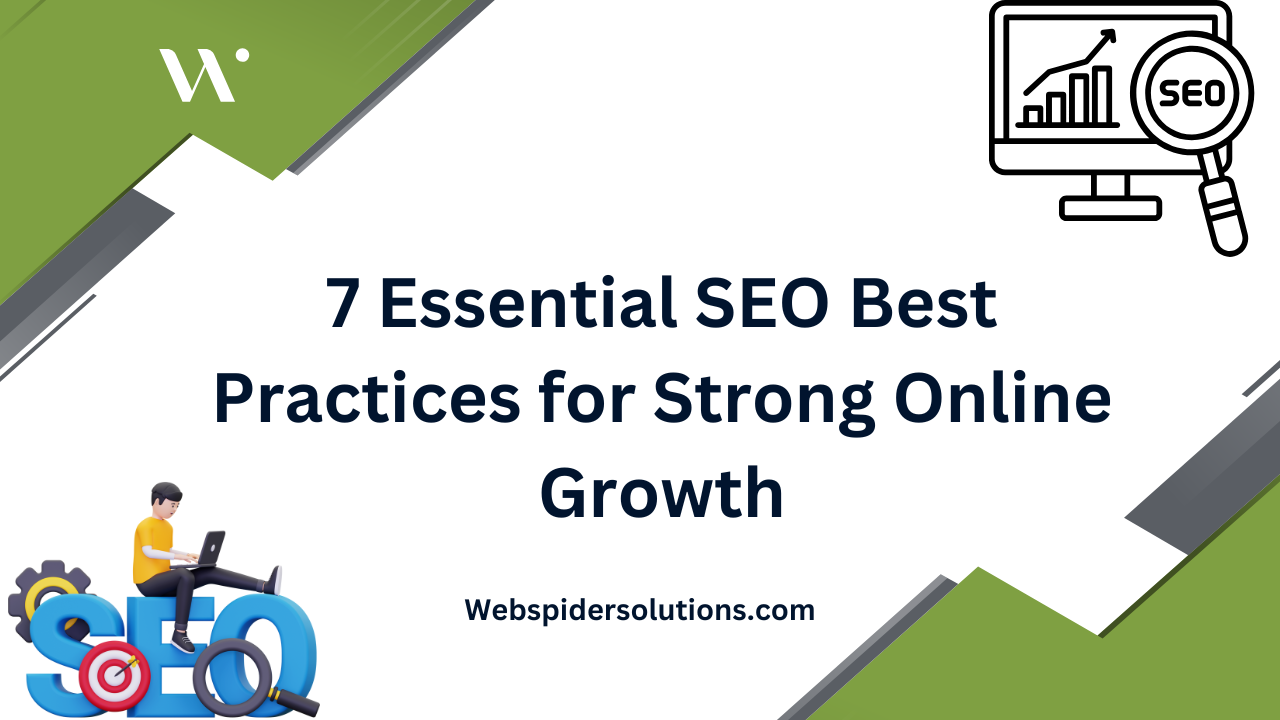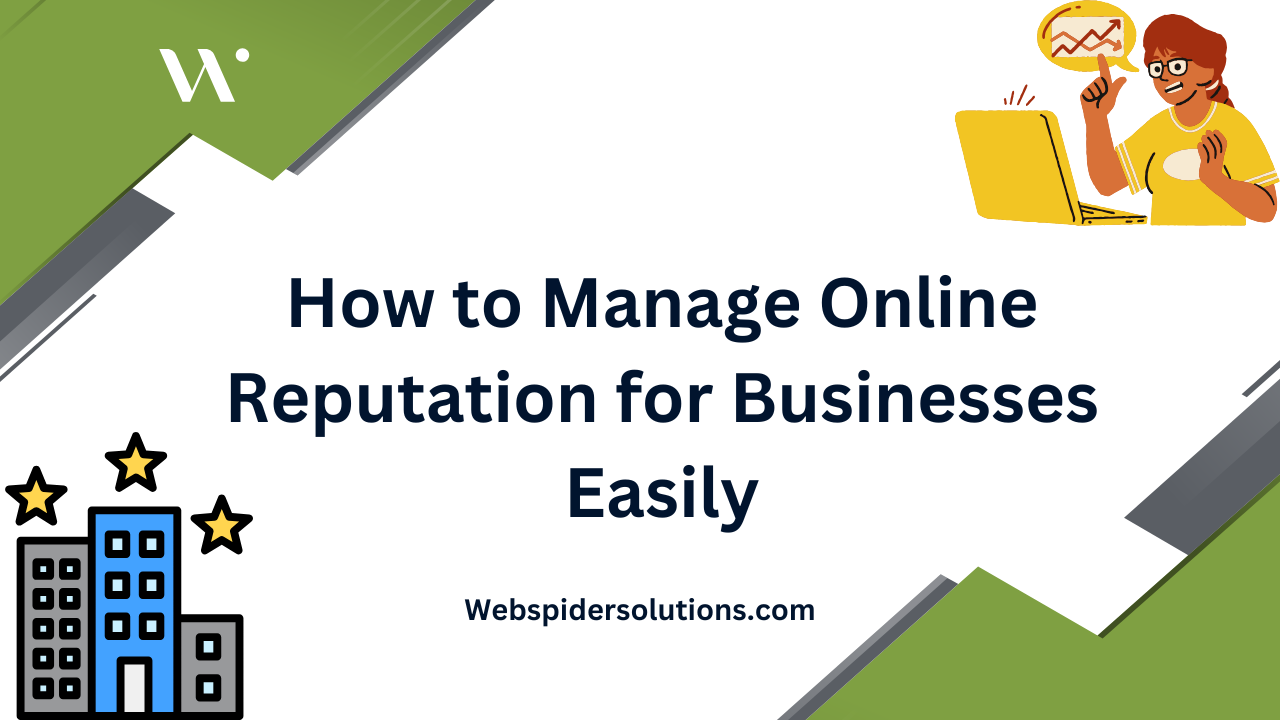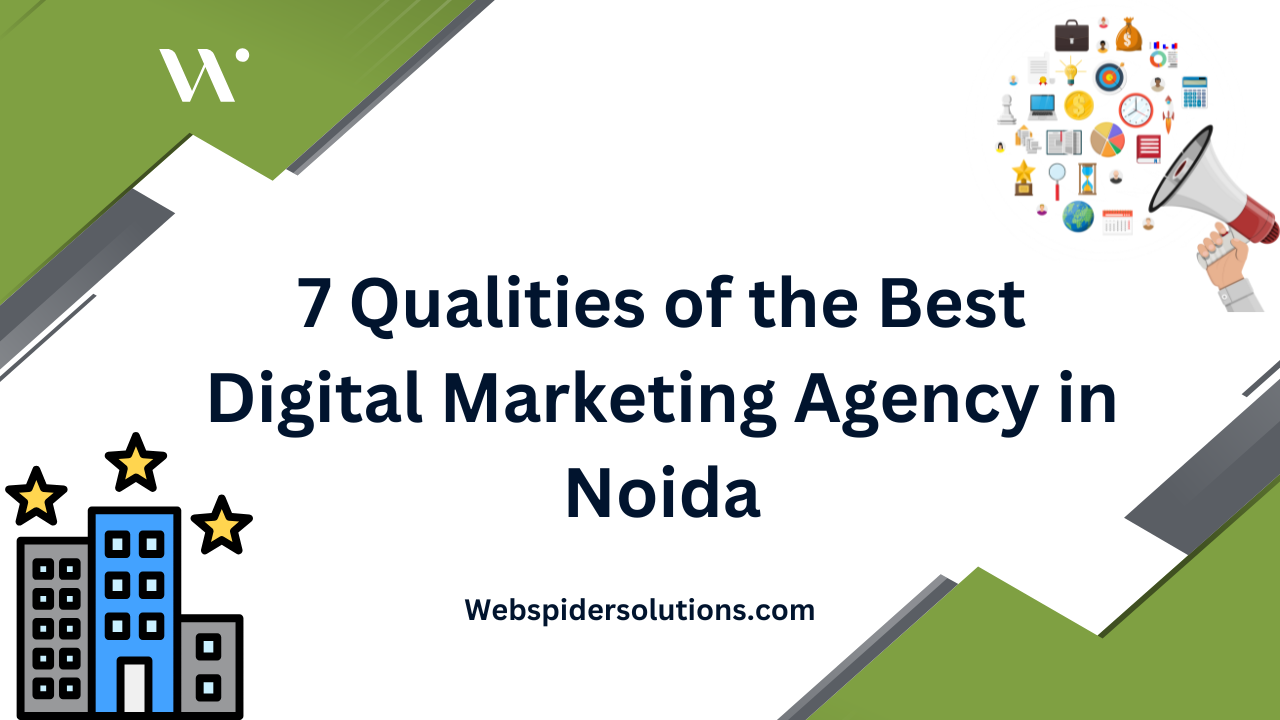Every business owner wants more eyes on their website, but getting noticed online can feel like a race with no clear finish line. Businesses that use Pay-Per-Click advertising are 50% more likely to drive immediate traffic to their sites compared to relying on search engine optimization alone. Understanding the principles behind PPC unlocks new opportunities for targeted marketing and smarter spending, guiding you toward strategies that actually get results.
Table of Contents
- Understanding PPC Advertising Fundamentals
- Types of PPC Campaigns and Platforms
- How PPC Works: Process and Key Features
- Major Benefits and Strategic Advantages
- Costs, Return on Investment, and Common Pitfalls
- PPC Versus Other Digital Marketing Options
Key Takeaways
| Point | Details |
|---|---|
| PPC Advertising Basics | PPC is a paid advertising strategy where businesses pay for clicks on their ads, enabling targeted traffic generation effectively and immediately. |
| Keyword and Ad Optimization | Effective PPC requires strategic keyword selection, compelling ad creation, and rigorous landing page optimization to enhance conversion rates. |
| Performance Monitoring | Continuous analysis of metrics like click-through rates and ROI is essential for refining PPC campaigns and maximizing investment returns. |
| Platform Diversity | Various platforms like Google Ads and Facebook Ads cater to different marketing goals, necessitating a tailored approach based on audience and objectives. |
Understanding PPC Advertising Fundamentals
Pay-Per-Click (PPC) advertising represents a powerful digital marketing strategy where businesses pay a fee each time their online advertisement gets clicked. According to IJNRD, this advertising model allows brands to purchase targeted website visits instead of attempting to “earn” those visits organically through search engine optimization.
At its core, PPC advertising operates through strategic keyword bidding on platforms like Google and Bing. Advertisers select specific keyword phrases relevant to their target market and compete in real-time auctions to display their sponsored advertisements. When potential customers search using those keywords, the advertiser’s ad appears in prominent search result positions. As Wikipedia explains, this model enables precise audience targeting by connecting businesses directly with users actively searching for their products or services.
The fundamental mechanics of PPC involve several critical components:
- Keyword Selection: Identifying and bidding on search terms most relevant to your business
- Ad Creation: Developing compelling, targeted advertisements that resonate with potential customers
- Bidding Strategy: Determining how much you’re willing to pay for each potential click
- Landing Page Optimization: Ensuring the webpage users arrive at matches the advertisement’s promise
Successful PPC campaigns require continuous monitoring and refinement. Businesses must track metrics like click-through rates, conversion rates, and cost per acquisition to maximize their advertising investment. Understanding PPC Best Practices for Effective Advertising can provide deeper insights into optimizing your digital advertising approach.
Types of PPC Campaigns and Platforms
Pay-Per-Click (PPC) advertising offers a diverse landscape of platforms and campaign types, each designed to meet specific marketing objectives. According to Global Spider AF, the top PPC platforms include Google Ads, Microsoft Ads, Meta Ads (Facebook & Instagram), LinkedIn Ads, TikTok Ads, Amazon Ads, Pinterest, and Twitter/X Ads, with each platform delivering unique targeting capabilities and audience reach.
Search Network Campaigns represent the most traditional form of PPC advertising. These ads appear directly in search engine results when users type relevant keywords, offering high-intent targeting. Display Network Campaigns take a different approach, showing visual advertisements across websites, apps, and platforms to build brand awareness and reach broader audiences.
Different platforms excel in specific marketing scenarios:
Here’s a comparison of the most popular PPC platforms and their key strengths:
| Platform | Best For | Key Strengths |
|---|---|---|
| Google Ads | High-intent search traffic | Broad reach Robust targeting Extensive analytics |
| Facebook/Instagram Ads | Demographic and interest targeting | Visual ads High engagement Flexible ad formats |
| LinkedIn Ads | B2B marketing | Professional targeting Industry/business filters |
| TikTok Ads | Youthful, engaged audiences | Trend-driven Creative video Rapid growth |
| Microsoft Ads | Complementary to Google reach | Lower CPC Unique audience |
- Google Ads: Best for high-intent search traffic and broad market reach
- LinkedIn Ads: Ideal for B2B marketing and professional audience targeting
- Facebook/Instagram Ads: Excellent for demographic and interest-based targeting
- TikTok Ads: Perfect for reaching younger, engagement-driven audiences
As ClickPatrol highlights, understanding each platform’s unique cost-per-click and ad formats is crucial for creating an effective digital advertising strategy. Types of Online Advertising That Boost Your Business can provide additional insights into maximizing your advertising investments across these diverse platforms.
How PPC Works: Process and Key Features
Pay-Per-Click (PPC) advertising operates through a sophisticated auction-based system that connects advertisers with potential customers at the precise moment of interest. As Wikipedia explains, the core mechanism involves advertisers bidding on specific keyword phrases relevant to their target market, with ads appearing in search engine results or on content sites.
Keyword Bidding forms the foundation of PPC campaigns. Advertisers select keywords that potential customers might use when searching for their products or services. These keywords trigger ad displays, but the placement isn’t solely determined by the highest bid. Quality Score plays a crucial role, which considers factors like ad relevance, click-through rates, and landing page experience.
The PPC process typically involves these key steps:

- Keyword Research: Identifying most relevant search terms
- Ad Creation: Developing compelling, targeted advertisements
- Bid Strategy: Setting maximum cost-per-click amounts
- Campaign Launch: Deploying ads across chosen platforms
- Continuous Optimization: Monitoring and refining campaign performance
Successful PPC campaigns require ongoing management and strategic adjustments. Understanding PPC Advertising Explained for Your Business can help you dive deeper into the nuanced world of pay-per-click advertising, ensuring you maximize your digital marketing investments.
Major Benefits and Strategic Advantages
Pay-Per-Click (PPC) advertising offers businesses a powerful arsenal of strategic marketing advantages that go far beyond traditional advertising methods. According to Global Spider AF, PPC provides exceptional benefits like high-intent search visibility, smart bidding capabilities, advanced remarketing techniques, and precise audience segmentation.
Immediate Visibility stands out as one of PPC’s most compelling advantages. Unlike organic marketing strategies that can take months to generate results, PPC campaigns can place your brand front and center in search results instantaneously. As ClickPatrol highlights, these campaigns deliver precise targeting and measurable return on investment, allowing businesses to reach their exact audience with unprecedented accuracy.
Key strategic advantages of PPC include:
- Precise Audience Targeting: Reach specific demographics, interests, and behaviors
- Budget Control: Set daily and campaign spending limits
- Measurable Results: Track performance with detailed analytics
- Quick Market Testing: Rapidly validate marketing messages and product concepts
- Flexible Campaign Management: Adjust strategies in real-time based on performance
By leveraging these strategic advantages, businesses can create highly efficient marketing campaigns that deliver immediate, trackable results.
Building a Marketing Strategy for 2025 can provide additional insights into integrating PPC into your comprehensive digital marketing approach.
Costs, Return on Investment, and Common Pitfalls
Navigating the financial landscape of PPC advertising requires a strategic approach that balances investment with potential returns. Cost-Per-Click (CPC) varies dramatically across industries, with some sectors experiencing significantly higher pricing due to competitive markets. As ClickPatrol highlights, factors like industry competition and ad quality score play critical roles in determining overall advertising expenses.
Return on Investment (ROI) in PPC is not just about spending money, but spending it intelligently. Successful campaigns require ongoing optimization, precise targeting, and continuous performance analysis. The most effective advertisers treat PPC as a dynamic investment, constantly refining their approach to maximize conversions while minimizing unnecessary expenditure.
Common pitfalls that can undermine PPC campaign effectiveness include:
- Poor Keyword Selection: Targeting overly broad or irrelevant keywords
- Neglecting Ad Relevance: Creating ads that don’t align closely with landing pages
- Inadequate Conversion Tracking: Failing to measure true campaign performance
- Ignoring Negative Keywords: Not filtering out non-converting search terms
- Overlooking Mobile Optimization: Neglecting mobile user experience
To maximize your PPC investments, it’s crucial to approach digital advertising with a data-driven mindset. Boost Your Digital Marketing ROI can provide additional strategies for turning your advertising spend into measurable business growth.
PPC Versus Other Digital Marketing Options
Digital marketing offers multiple strategies, but Pay-Per-Click (PPC) advertising stands out for its unique approach to generating targeted traffic. According to Wikipedia, PPC fundamentally differs from traditional advertising models by requiring payment only when an actual ad click occurs, providing a more accountable and measurable marketing approach.
Immediate Results Versus Long-Term Growth represent the core distinction between PPC and other digital marketing strategies. While organic search engine optimization (SEO) builds gradual, sustainable visibility, PPC delivers instant visibility and targeted traffic. As ClickPatrol highlights, PPC provides immediate traffic with precise targeting, contrasting sharply with organic SEO efforts that may take months to generate meaningful results.
Key comparative advantages of PPC include:
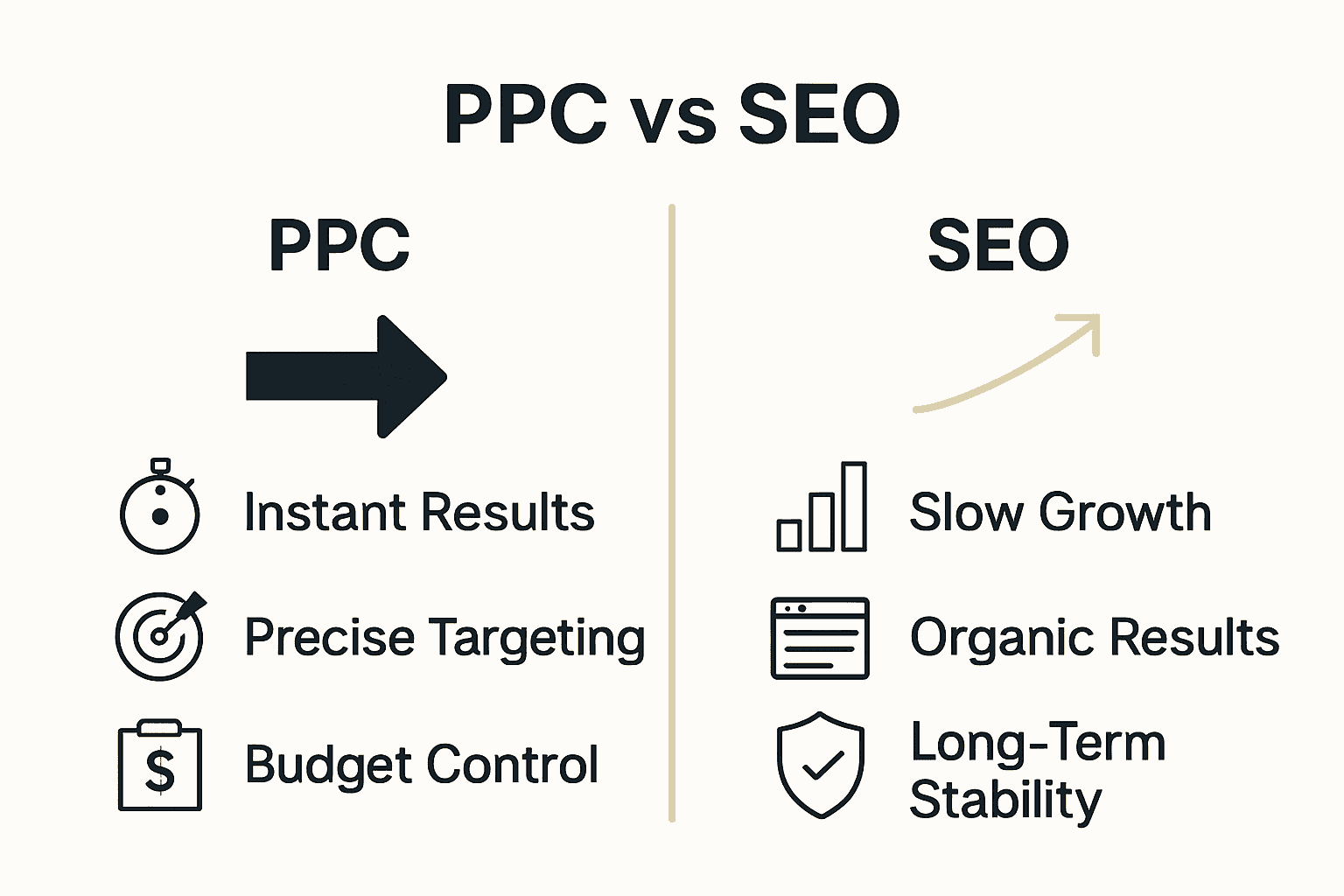
- Speed to Market: Instant visibility compared to slow-burn SEO strategies
- Precise Targeting: Granular audience selection not possible in traditional advertising
- Budget Flexibility: Complete control over daily and campaign spending
- Measurable Outcomes: Detailed analytics tracking every dollar spent
- Rapid Experimentation: Quick testing of marketing messages and audience responses
SEO vs PPC: Best Strategy for Maximum Impact can help you understand how to strategically blend these complementary marketing approaches for optimal business growth.
Unlock Your Business Potential with Expert PPC Solutions
The article outlines common challenges such as navigating complex keyword bidding, maximizing ROI, and crafting ads that truly connect with your audience. You understand the frustration of running pay-per-click campaigns that deliver clicks but fail to generate meaningful results or sustainable growth. Terms like “Quality Score,” “bid strategy,” and “landing page optimization” are more than jargon—they represent critical steps that demand expertise and continuous refinement.
At Web Spider Solutions, we specialize in transforming these PPC hurdles into your strongest growth drivers. Our tailored approach focuses on precise audience targeting, smart bidding strategies, and compelling ad creation designed to increase conversions and reduce wasted spend. Whether you are entering platforms like Google Ads or exploring remarketing options, our Paid Advertising Archives delivers tested strategies and actionable insights.
Are you ready to move beyond trial and error and build a PPC campaign that fuels immediate visibility and measurable success? Visit Web Spider Solutions today and explore how our expertise in paid ads and B2B Marketing Archives can help you dominate digital markets in 2024. Take control now and request a free consultation tailored to your business goals.
Frequently Asked Questions
What is PPC advertising and how does it work?
PPC, or Pay-Per-Click advertising, is a digital marketing strategy where advertisers pay a fee each time one of their ads is clicked. It operates through keyword bidding on platforms like Google Ads, where businesses choose relevant keywords, create ads, and bid for visibility in search results.
What are the benefits of using PPC advertising?
PPC advertising offers immediate visibility, precise audience targeting, measurable results, budget control, and flexibility in campaign management. It allows businesses to reach their target audience quickly and track the performance of their ads effectively.
How do I choose the right keywords for my PPC campaign?
Choosing the right keywords involves conducting keyword research to identify terms your potential customers are searching for. Aim for highly relevant keywords that match your products or services and consider factors such as search volume and competition to determine the best options.
How can I optimize my PPC campaign for better results?
To optimize your PPC campaign, focus on continuous monitoring and analysis of key metrics like click-through rates and conversion rates. Adjust your bidding strategies, refine your ad copy, and ensure landing pages are relevant and optimized to enhance user experience and increase conversions.
Recommended
